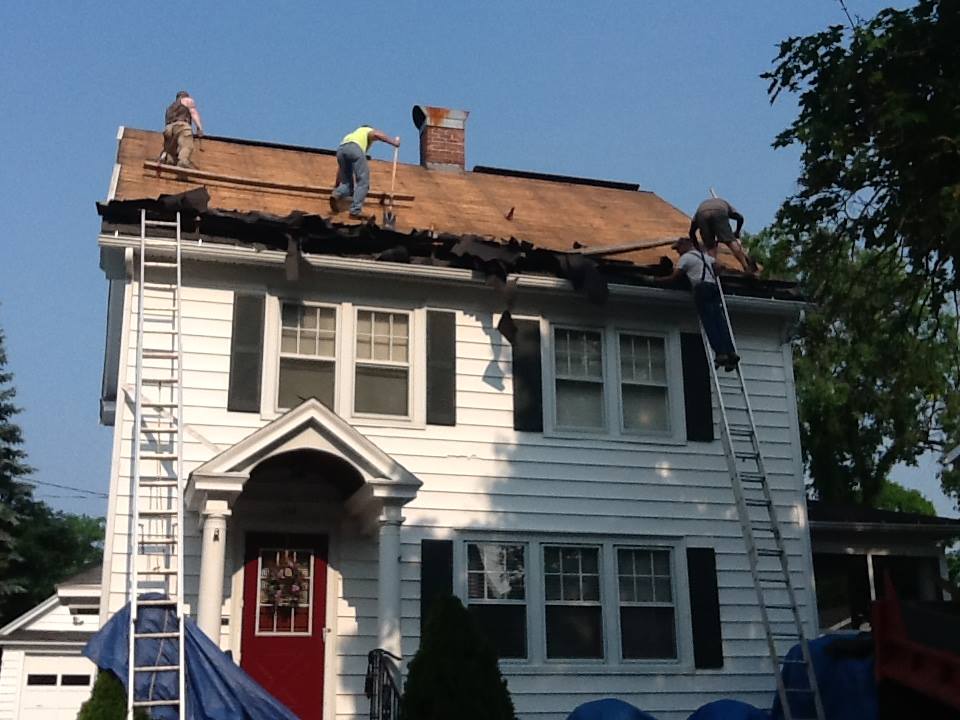The summer home improvement season is well under way across Jamestown as property owners tackle a wide range of projects to maintain and enhance their homes and rental properties.
This is especially evident in this year’s five Renaissance Blocks on Beechview, Euclid, Hotchkiss, Ellis, and Dearborn. On those streets, 86 property owners are in the midst of completing nearly $300,000 in planned exterior improvements with help from matching grants from the Jamestown Renaissance Corporation. These clusters of properties were part of an intense competition this spring to participate in the fifth year of the program, which is now funded by the John A. and Oscar Johnson Memorial Trust.
As these property owners complete their projects, many wonder whether their work will result in a higher property assessment and higher taxes. For those who are wondering the same thing, there are some basic rules of thumb to keep in mind.
First, general maintenance does not trigger an increase in your property’s assessment. This includes painting, landscaping, roof repair, porch repair, driveway repair, and gutter replacement, as well as installation of a new door or some new windows. Some property owners avoid this work under the impression that it will automatically increase their assessment. It doesn’t.
What types of projects do trigger an assessment increase? Almost any improvement that requires a building permit, including an addition to a home, construction of a new porch, deck or patio, a new garage or backyard shed, or a new fence. An assessment increase is also triggered if certain upgrades are performed, such as the replacement of deteriorated clapboard with vinyl siding. Basically, these are capital improvements that make a home more valuable.
Fortunately, there’s a tax exemption program available to help reduce the impact of these improvements on a property owner’s tax bill in the near term. It’s called the 421-f exemption and it applies to both city and county taxes. It works by taking the value of the improvement to a residential structure (one-family or two-family) and fully exempting it from the property’s taxable value for one year. After year one, a sliding exemption scale is used until year nine, when the full value of the improvement is taxed. To qualify, an improvement must be valued at $5,000 or more, with $80,000 as the maximum exemption value.
For example, if a property owner completes an improvement that adds $10,000 to the value of their property and they file for a 421-f exemption, they stand to save $326 in year one and $1,468 through year eight (assuming a static tax rate). Currently, 42 property owners in the city are utilizing this exemption. To learn more about 421-f and how it works, call the Jamestown Assessor’s office at 483-7510.
Although no one looks forward to an increase in their property’s assessment, a broad-based rise in property values is a fundamental objective of neighborhood revitalization efforts in the city. That’s because the long-term goal of the Renaissance Block Challenge and other programs is to make city streets more appealing and marketable to buyers who have resources to improve and maintain the city’s housing stock. As this happens, average sale prices will increase and lead to higher assessed values. As market values improve, so will the tax base. And as the tax base improves, so will the city’s ability to lower its tax rate and neutralize the effect of higher assessments.
Over time, not only does an improving market stabilize and strengthen the tax base, but it also increases the likelihood that property owners will get a strong return on their investment when it comes time to sell. The fact that Jamestown homeowners have lacked confidence for decades in their ability to earn even a modest return on investment has been one of the driving factors of neighborhood decline.
But the flurry of activity in this year’s five Renaissance Blocks and on blocks throughout the city – coupled with accelerated efforts to demolish the blighted homes that drain value from the city – is a strong sign that more property owners are investing in their properties, investing in their neighborhoods, and increasing the potential for a healthy city housing market.
–Greg Lindquist and Peter Lombardi
This post originally appeared in The Post-Journal on June 15, 2015, as the JRC’s biweekly Renaissance Reflections feature.

